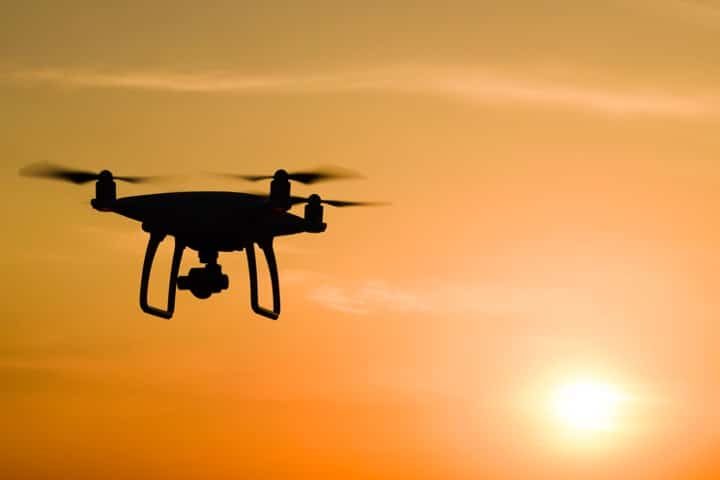
The police in Santa Monica, California, can have eyes on the location of a 911 emergency call, in some cases within 30 seconds, by sending a drone from their station’s rooftop to hover over the site of the call, giving them situational awareness as officers are en route. This aerial surveillance may be beneficial in protecting and saving lives, but is it constitutional?
NBC News reported this week on the upscale beach town using drones as first responders to 911 calls:
“It’s a fundamental change in the way that we can bring policing services to our city,” said Peter Lashley, a veteran of the force who often pilots the drone from a screen-filled command center inside the police station.
The drone’s powerful camera can provide a view of several square blocks, or it can zoom in close enough to read a license plate. In Santa Monica, the drone camera was the only witness to a brutal robbery, and one of two suspects was apprehended and convicted. On at least three occasions, it provided responding officers with critical, otherwise unobtainable information — that what looked like guns in the hands of subjects were not real firearms. That insight allowed officers to respond much less aggressively.
Using drones as first responders has been around in California for several years, with the city of Chula Vista leading the way. In 2015, the Chula Vista Police Department (CVPD) formed the Uncrewed Aerial Systems (UAS) Committee to study the use of the technology in its public safety operations. According to the city, the committee was tasked to “study best practices, policies, and procedures regarding the use of UAS technology in law enforcement.”
In October 2018, reportedly with “strong support from the community, CVPD began deploying drones from the rooftop of the police department headquarters to 911 calls and other reports of emergency incidents, such as crimes in progress, fires, traffic accidents, and reports of dangerous subjects.”
This “Drone as First Responder” (DFR) program transformed policing by increasing officer and community safety while reducing overall police response times. According to CVPD, the drone camera streams HD video back to “the department’s real-time operations center where the teleoperator, who is a trained critical incident manager, not only controls the drone remotely, but communicates with the units in the field to give them information and tactical intelligence about what they are responding to. The system also streams the video feed to the cell phones of the first responders, supervisors, and command staff, so they can see exactly what the drone is seeing.”
Nearly a year after the Highland Park mass shooting in Illinois, that state passed a law last month that allows police to use drones at public events. As MSN reported, “Several Illinois police departments flexed their new authority this Fourth of July, flying drones over parades and gatherings in the state.” The site continued:
Karl Walldorf, the chief of police in Lake Forest, a town about 6 miles north of Highland Park, told Insider that concern about another mass shooting happening in the area “certainly was a huge factor, probably the largest factor” in his department’s decision to use drones to monitor the day’s celebrations.
The use of drones has been beneficial to police operations in many cities, including Santa Monica. The police reportedly don’t “use the drones to hover over neighborhoods, hunting for crime,” but the boundaries of drone use by police can be quite vague and cause for concern. Police drone surveillance is likely a violation of the Fourth Amendment of the Constitution, which protects against “unreasonable searches and seizures.” It’s the right to privacy we all should expect in a free society that’s potentially being violated with police drone use.
The Cato Institute questioned this in their article “Does the 4th Amendment Prohibit Warrantless Drone Surveillance?” They shared:
“The Supreme Court has yet to answer that question, but an appeals court in Michigan recently considered the question, and in an opinion written by Judge Kathleen Jansen answered ‘Yes.’ The court’s analysis is particularly noteworthy in that it relied heavily on Fourth Amendment cases besides those dealing specifically with aerial surveillance and may encourage other judges to do likewise when considering the constitutionality of warrantless drone surveillance.”
The Federal Aviation Administration (FAA) currently regulates all drone use in our nation’s airspace, but leaves it up to the states to legislate beyond FAA regulations. (Drone laws are listed here by state.)




